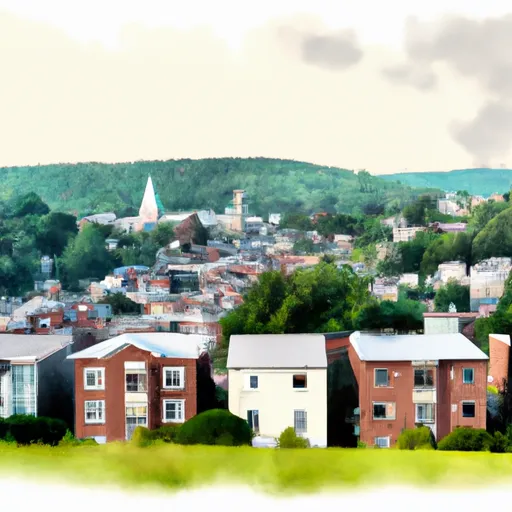-
 Snoflo Premium
Snoflo Premium
Get unlimited access to all our content
With no Ad interruptions! - Start Your Free Trial Login with existing account
Puritan
Eden Index
Climate
8.7
•
Recreation
6.2
•
Community
3.4
•
Safeguard
6.5/10

Puritan, Pennsylvania is a small town located in the eastern part of the state. With a humid continental climate, Puritan experiences all four seasons. Summers tend to be warm and humid, with temperatures ranging from the 70s to 90s Fahrenheit. Winters can be cold, with temperatures dropping to the 20s and 30s, and snowfall is common.
The town is also blessed with an abundance of water resources. It is surrounded by several lakes, rivers, and streams, providing ample opportunities for various water-based activities. Fishing enthusiasts can enjoy casting their lines in these water bodies, with species such as bass, trout, and catfish being commonly found.
Outdoor recreation opportunities in Puritan are diverse. The surrounding forests offer excellent hiking trails, allowing visitors to explore the natural beauty of the area. Additionally, there are several designated camping areas for those seeking to spend a night or more in the great outdoors. During the winter months, residents and visitors can engage in activities like skiing, snowboarding, and snowshoeing at nearby resorts.
Overall, Puritan, Pennsylvania offers a welcoming climate, abundant water resources, and a multitude of outdoor recreation opportunities for residents and visitors alike.
What is the Eden Index?
The Snoflo Eden Index serves as a comprehensive rating system for regions, evaluating their desirability through a holistic assessment of climate health, outdoor recreation opportunities, and natural disaster risk, acknowledging the profound impact of these factors on livability and well-being.
Climate Health Indicator (CHI): 8.7
Puritan receives approximately
1125mm of rain per year,
with humidity levels near 79%
and air temperatures averaging around
9°C.
Puritan has a plant hardyness factor of
5, meaning
plants and agriculture in this region thrive during a short period during spring and early summer. Most
plants will die off during the colder winter months.
By considering the ideal temperature range, reliable water supplies, clean air, and stable seasonal rain or snowpacks, the Climate Health Indicator (CHI) underscores the significance of a healthy climate as the foundation for quality living.
A healthy climate is paramount for ensuring a high quality of life and livability in a region, fostering both physical well-being and environmental harmony. This can be characterized by ideal temperatures, reliable access to water supplies, clean air, and consistent seasonal rain or snowpacks.
Weather Forecast
Streamflow Conditions
Allegheny
Area Rivers
Allegheny
Snowpack Depths
Allegheny
Reservoir Storage Capacity
Allegheny
Groundwater Levels
Recreational Opportunity Index (ROI): 6.2
The Recreational Opportunity Index (ROI) recognizes the value of outdoor recreational options, such as parks, hiking trails, camping sites, and fishing spots, while acknowledging that climate plays a pivotal role in ensuring the comfort and consistency of these experiences.
Access to outdoor recreational opportunities, encompassing activities such as parks, hiking, camping, and fishing, is crucial for overall well-being, and the climate plays a pivotal role in enabling and enhancing these experiences, ensuring that individuals can engage in nature-based activities comfortably and consistently.
Camping Areas
| Campground | Campsites | Reservations | Toilets | Showers | Elevation |
|---|---|---|---|---|---|
| Spring Gap - C and O Canal National Park | 19 | 563 ft | |||
| Shawnee State Park | None | 1,254 ft | |||
| Green Ridge State Forest Dispersed | 100 | 1,076 ft | |||
| Duman Lake County Park | 6 | 1,743 ft | |||
| Adams Croyle | None | 1,688 ft | |||
| Prince Gallitzin State Park | None | 1,480 ft | |||
| Curwensville Lake | 50 | 1,312 ft | |||
| Blue Knob State Park | None | 2,576 ft | |||
| Nanty Glo Municipal Park | None | 1,733 ft | |||
| Rocky Gap State Park | 278 | 1,231 ft |
Nearby Ski Areas
Catastrophe Safeguard Index (CSI):
The Catastrophe Safeguard Index (CSI) recognizes that natural disaster risk, encompassing floods, fires, hurricanes, and tornadoes, can drastically affect safety and the overall appeal of an area.
The level of natural disaster risk in a region significantly affects safety and the overall livability, with climate change amplifying these risks by potentially increasing the frequency and intensity of events like floods, fires, hurricanes, and tornadoes, thereby posing substantial challenges to community resilience and well-being.
Community Resilience Indicator (CRI): 3.4
The Community Resilience Indicator (CRI) recognizes that education, healthcare, and socioeconomics are crucial to the well-being of a region. The CRI acknowledges the profound impact of these elements on residents' overall quality of life. By evaluating educational resources, healthcare accessibility, and economic inclusivity, the index captures the essential aspects that contribute to a thriving community, fostering resident satisfaction, equity, and social cohesion.

